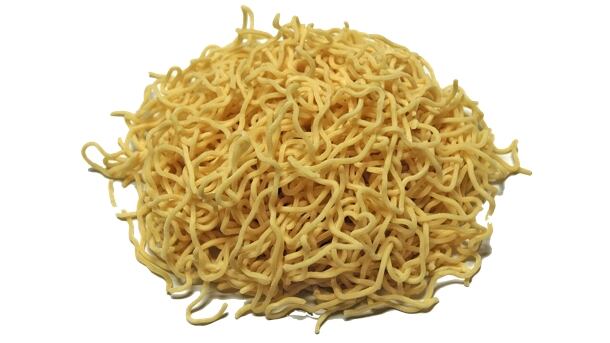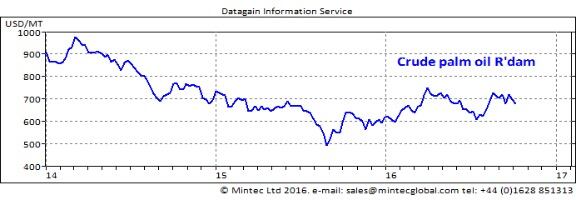Such a move would allow the country to break away from strict import protectionism and an estimated US$36bn tax burden passed on to its consumers.
It would also follow a warning by the World Bank that Indonesia needs to rebalance its food security policy and use public spending to increase domestic productivity.
Denni Purbasari, President Widodo’s deputy chief of staff, said that lawmakers have been reviewing the way that important commodities including beef, chillies, onions, rice, sugar and other staples are traded.
"We are looking at the possibility of changing from licensing regime to tariffs, such that everybody can play to import the commodities," she said.
The Indonesian government currently has a quota system only for the import of food commodities it considers to be important. However, the system generates byproducts such as massive taxes and restrictions.
The state procurement agency, Bulog, for example, is only allowed to import non-premium rice, while white sugar imports are limited to state-owned companies.
If Indonesia turns from being a licensing importer for commodities to one that adopts tariffs, the move will follow the recent abolition of a quota system for cattle imports, replaced by tariffs and the mandatory attendance at a breeding programme for those planning to ship into the country..
Quota systems use Agriculture Ministry’s domestic food production data to decide levels, though officials routinely inflate rice production data to present a bright picture and keep farm subsidies flowing, according to a Reuters investigation earlier this year.
Purbasari said Indonesia is also looking at ways to reform the fertiliser and rice-for-poor subsidy scheme "to make sure that every single penny is spent really well”.
More stories from Southeast Asia…
Holista CollTech sets out to develop world’s first low-GI noodles
Malaysian-Australian collagen-based ingredients specialist Holista CollTech will conduct joint research with Wing’s Food Products, a major Canadian noodle manufacturer, to develop the world’s first low-GI noodles.

Wing’s will test Holista’s bakery ingredient, Panatura GI, which has achieved the world’s lowest clean-label GI reading for white bread, for use in the noodles. Holista, meanwhile, will provide expertise on the application of its formula.
The product will then be independently tested at GI-Labs, a nutrition research organisation in Toronto. Once it is validated, Wing’s and Holista will enter a commercial agreement to manufacture and distribute the low-GI noodles across North America.
“Using our experience in the low-GI market, we are confident that we can crack the next frontier: noodles,” said Rajen Manicka, Holista’s chief executive.
Based in Ontario and Alberta, Canada, Wing’s has supplied noodles to the North American market since 1953.
According to market research group Statista, almost 50% of the world’s wheat is consumed as noodles, though only a quarter is made into bread. led by China and Indonesia lead the world noodles market.
In 2015 the global demand for instant noodles amounted to 103.58bn servings. In the United States alone, the noodle market is worth US$270m.
Panatura GI, which was developed by Holista in partnership with Veripan of Switzerland, is a breakthrough natural formula which, when added to white flour, dramatically reduces blood sugar levels without changing the taste or texture of the final product.
It recorded a GI reading of 53 in tests at a leading university in Sydney, the lowest-ever recorded for a “clean-label” white bread.
Holista also achieved a GI reading of 48 for muffins—again, the lowest clean-label reading for this category—at GI Labs. The same low-GI formula will be used as the base for the proposed low-GI noodles.
The partnership with Wing’s is the first major collaboration for Holista Foods, a US joint-venture company set-up between Holista and Nadja Foods.
Nadja Piatka, chief executive of Holista Foods, said that it was essential to tackle major refined carbohydrates to address a global pandemic of obesity and diabetes.
“In terms of wheat consumption, individuals are eating more noodles, especially the instant variety. We are committed to working with Wing’s to provide a healthier alternative to empower consumers with better choices,” she added.
Piatka’s Wing’s counterpart, Neal Lee, said the company was excited to be working with “a company that is on the cutting-edge of the low-GI movement.
“North American consumers are becoming more accustomed to Asian tastes and the noodle business is growing steadily from year to year. There is strong demand for a low-GI noodle product and we believe it will have a meaningful impact on consumers here,” said Lee.
Cargill hopes to become Philippines feed leader with new plant project
Cargill has begun construction of a new premix feed facility in the Philippines which has been designed to expand the company’s animal nutrition capabilities and meet increasing local demand.

The food and agriculture giant’s fifth animal nutrition plant in the Philippines, located in Bulacan, will be its first dedicated to manufacturing Provimi premix solutions. It will serve primarily medium to large livestock farms and feed millers.
“The livestock farming industry is evolving as farms consolidate, become larger and require more sophisticated nutritional solutions. The new facility will significantly increase the number of innovative offerings that will improve the cost and performance of raising livestock or producing quality complete feeds,” said Noel Kim, director of Cargill’s premix and nutrition operation in the Philippines.
“It will also provide a broader portfolio of premix solutions to help farmers who need greater flexibility in their animal nutrition requirements or those who are considering the transition from utilizing compound feeds to developing their own feed formulations.”
The Bulacan plan is designed to deliver 20,000 tonnes of premix solutions per year. Construction has just began and operations are expected to start in the third-quarter of 2017.
The Philippines is a key growth market for Cargill’s animal nutrition business in Asia, as it seeks to become a regional leader.
In addition to this new facility, Cargill is also investing in a new poultry processing facility in Batangas via a joint-venture with Jollibee. That facility will employ 1,000 employees and will be the largest of its kind in the Philippines.
Market update: Palm oil prices performing well
The price of palm oil has increased by 12% since August due to a decline in production coupled with high demand.
According to Mintec, the commodities analyst, estimates for global production between January and September 2016 showed a 7% decrease year on year to 43.3m tonnes.

This is due to weaker than expected production from major producers Indonesia and Malaysia, with the latter’s production estimated at 10.9m tonnes—down 15% year on year.
The fall in production has renewed concerns that tree damage in Southeast Asia, caused by droughts in 2015/16, may continue to hamper output in the 2016/17 season.
In addition to low production, palm oil exports have picked up recently, further supporting the high prices. This increase is mainly due to growth in demand from China and India ahead of festive celebrations in these countries.
